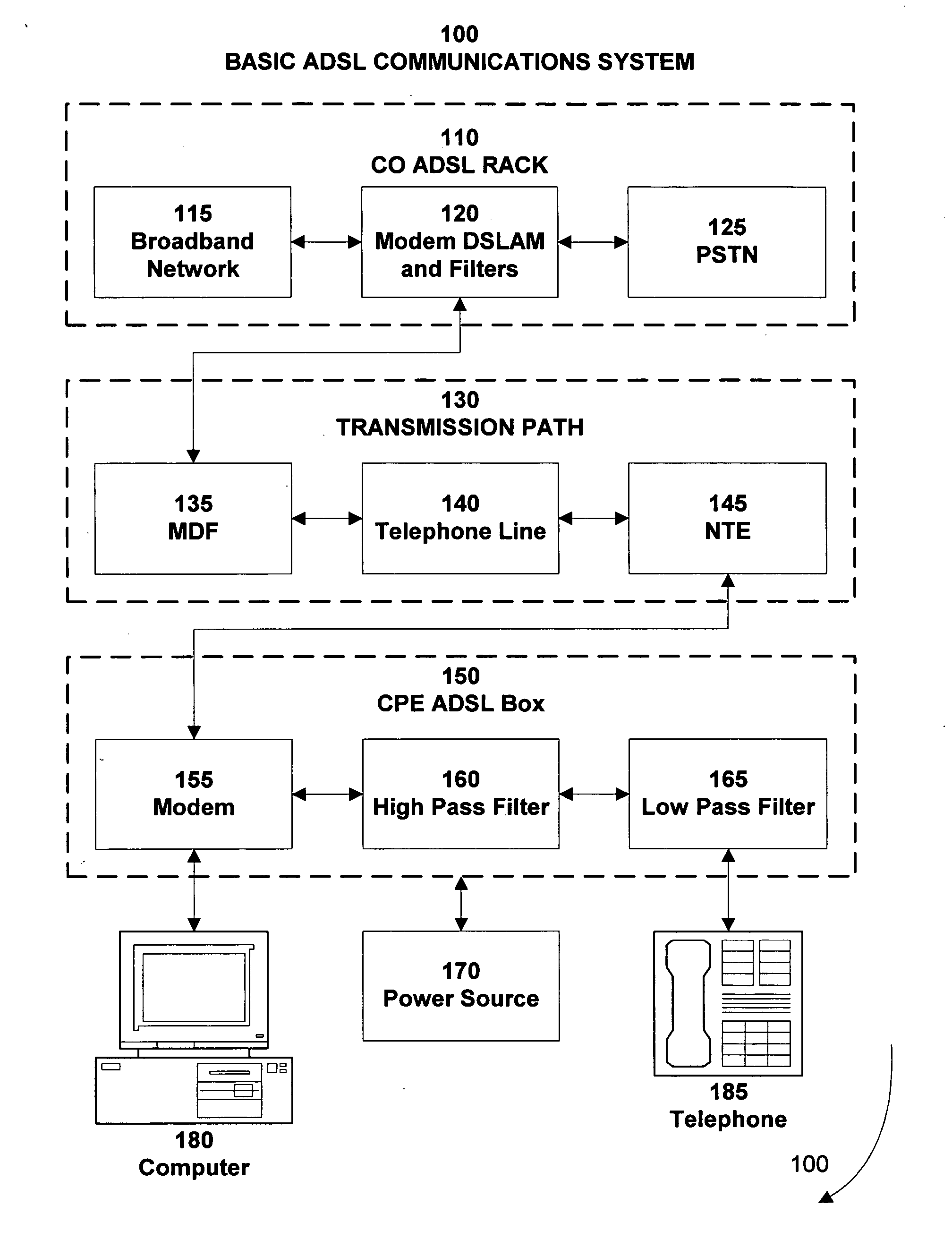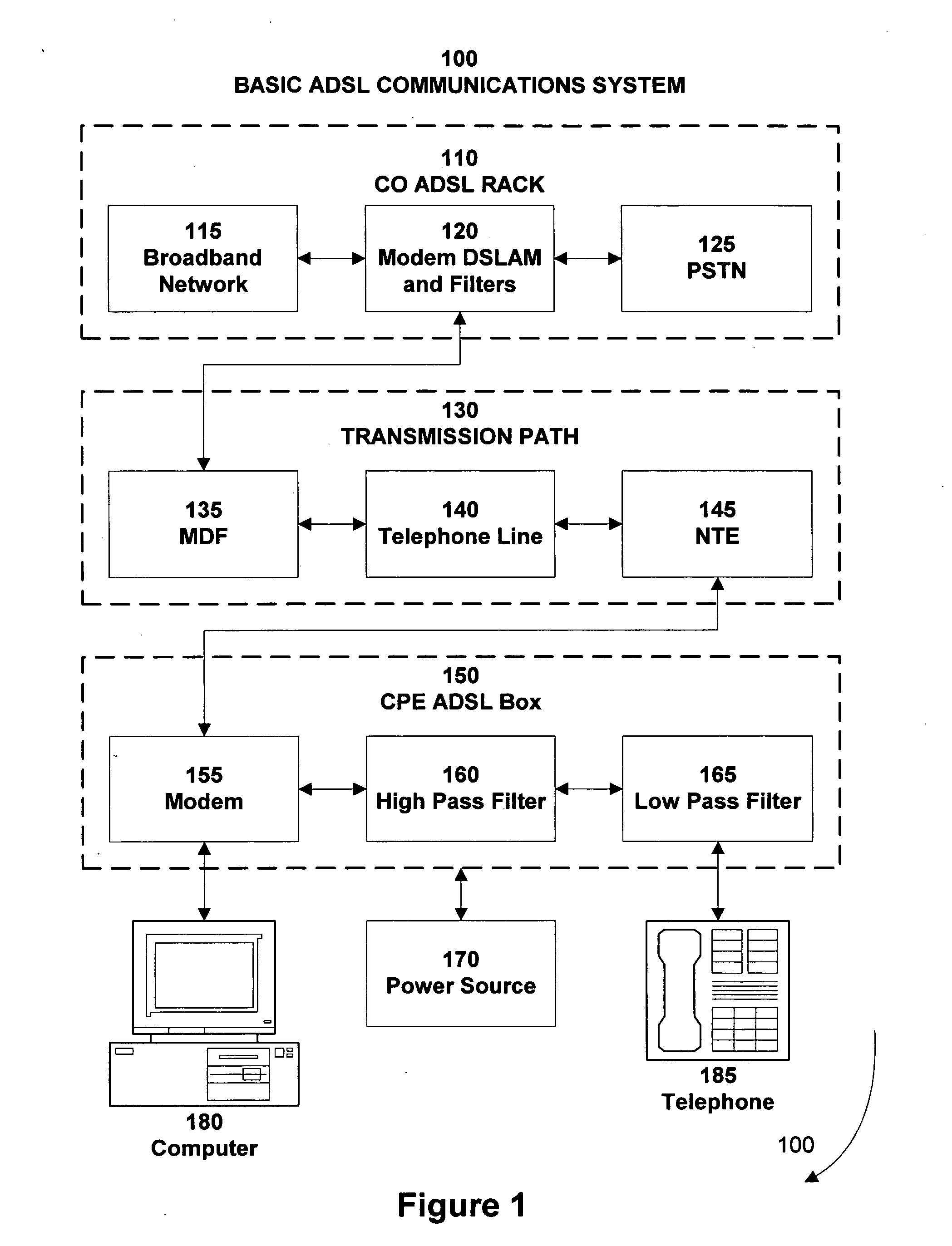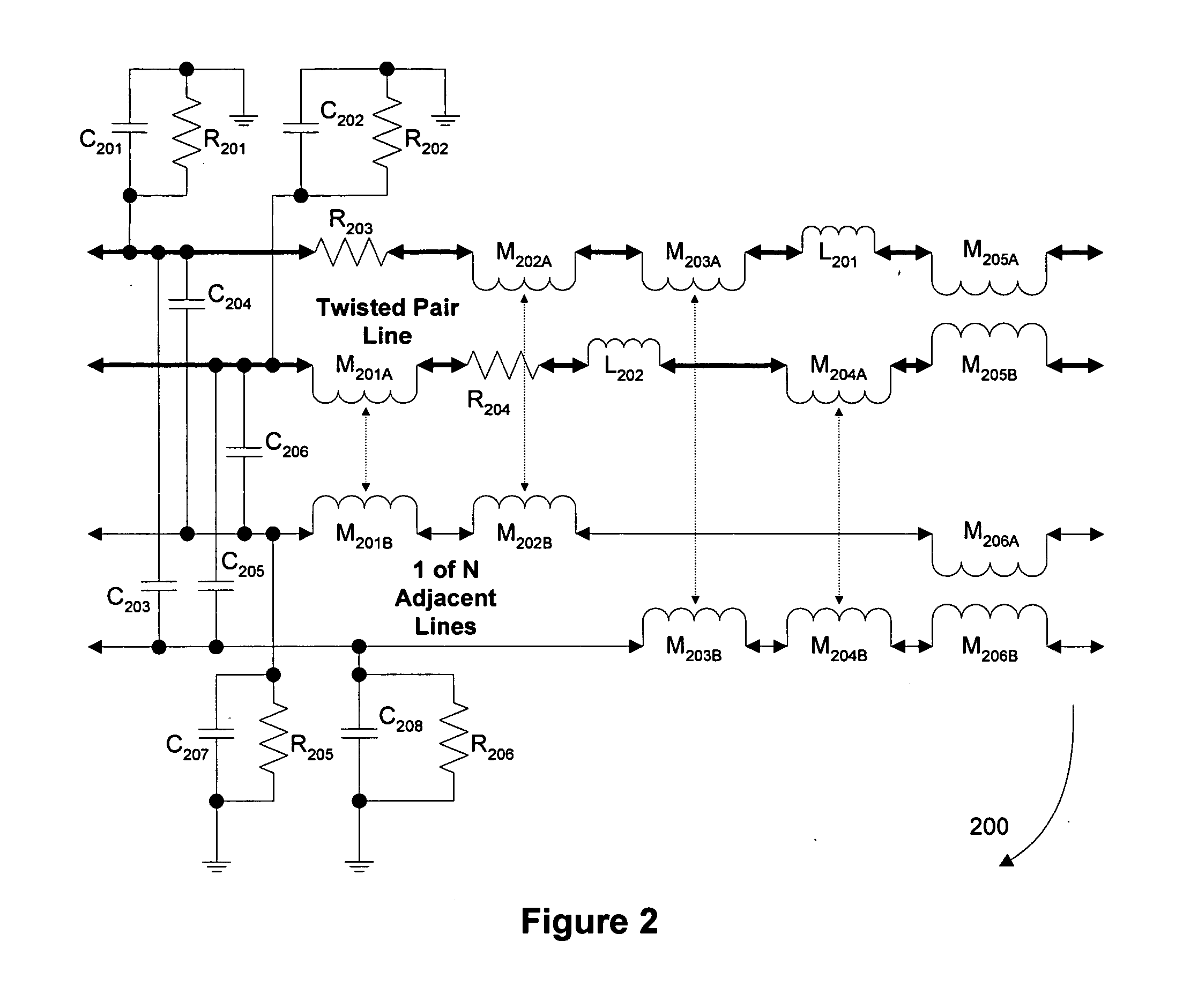System for crosstalk noise reduction on twisted pair, ethernet, polyphase and shielded wire systems
- Summary
- Abstract
- Description
- Claims
- Application Information
AI Technical Summary
Benefits of technology
Problems solved by technology
Method used
Image
Examples
embodiment 600
[0086]FIG. 5 is an illustration of an embodiment 600 of Stage 1 of the crosstalk noise reduction system of the present invention. The most significant element of Stage 1 is common mode choke 510 schematically represented by common mode choke T601. Present art xDSL systems use common mode chokes with a lower cutoff frequency of 40 to 50 MHz. The chokes primarily serve to remove RF and ingress noise. The high cutoff frequency has an additional benefit in that it keeps the choke small and low cost. Unfortunately, the low inductance that generates a high cutoff frequency allows in-band common mode noise to couple into the receive circuitry where numerous non-linear circuit elements such as semiconductor junctions are present to convert a portion to differential noise, thereby reducing the signal-to-noise ratio of the receiver circuit.
[0087] In the present invention, common mode choke T601 is the first and most significant component in the control and removal of common mode noise signals...
embodiment 700
[0094]FIG. 6 is a circuit diagram of an embodiment 700 of the common mode sense function of Stage 2 of the crosstalk noise reduction system of the present invention for twisted pair transmission media. A common mode sense resistor network comprising resistors R701 and R702 detects common mode signals present on the twisted wire pair transmission media. The network is located on the line side of common mode choke T601 and any other components that filter or distort common mode noise entering the modem in order to provide a large signal, undistorted sample of the common mode noise, including crosstalk, present on the transmission media.
[0095] Specific resistance values for resistors R701 and R702 are not critical. They should be large enough so as not to load the transmission media. For xDSL type systems, a value in the range of 10K to 100K is generally suitable. Absolute resistor tolerances are also of secondary importance. Tolerances of + / −0. 1% are typically recommended for the hyb...
embodiment 800
[0100] The output from embodiment 800 of synchronous AM detector 540 is an analog signal representing the summation of instantaneous output signals at all frequencies within the operating frequency band of analog multiplier U801. At any specific frequency within the operating band, the instantaneous output signal is of the form AB cos θ, where A is the instantaneous amplitude of the input signal at node N501 at the frequency, B is the instantaneous amplitude of the input signal at node N503 at the frequency, and θ is the phase angle between the 2 the input signals at the frequency. The output from analog multiplier U801 is coupled to the low pass filter input at node N801.
[0101] An alternate embodiment converts the two analog input signals to digital form and then carries out the synchronous detection (multiplication) and following low pass filter and AGC control functions digitally. The digital output of this process is the crosstalk noise cancellation signal that must then be reco...
PUM
 Login to View More
Login to View More Abstract
Description
Claims
Application Information
 Login to View More
Login to View More - R&D
- Intellectual Property
- Life Sciences
- Materials
- Tech Scout
- Unparalleled Data Quality
- Higher Quality Content
- 60% Fewer Hallucinations
Browse by: Latest US Patents, China's latest patents, Technical Efficacy Thesaurus, Application Domain, Technology Topic, Popular Technical Reports.
© 2025 PatSnap. All rights reserved.Legal|Privacy policy|Modern Slavery Act Transparency Statement|Sitemap|About US| Contact US: help@patsnap.com



